
Hello Guys! am very grateful and happy to take part in this lecture. Here is my Homework Post. I hope you enjoy it.

MINING AND BLOCK REWARDS

MINING
Mining is a general term that refers to the search for minerals underground. Crypto Asset Mining can be likened to this general term, even though the processes under it may be a little different, they are equally similar. Bitcoin can be said to be the most mined Crypto Asset, ever since the issuance of Cryptocurrencies.
Transactions occur on every Cryptocurrency Blockchain, day in and day out but since it is a decentralized system, there is no central body to check, regulate and verify every transaction that occurs on the Blockchain. This is where Miners come in. The work of Miners is to ensure that all transactions made on the Blockchain are valid and that coins are not spent or used twice. The various transactions that occur, are stacked up to make a block. Blocks come in different sizes; initially, the regular size of a block was 1MB but then the Segwit upgraded network was introduced with a larger block size of 4MB per Segwit Block.
After checking and validating the transactions, Miners stack the valid ones up to make and meet the block size. They then add it to the Blockchain but before it would be able to fit into the blockchain, the block needs its unique Hash. A Hash is like a Unique address or reference that links a block in the blockchain. The only way to prove that the block was truly mined by you, is to find the hash of the block.
This point is the most popular part of Mining, where the computers of miners compete with each other to trace and discover the Hash first. The fastest miner to get the Hash of the block would be given the reward for the block. So the faster your computer the better your chances of being a successful miner. This is why a lot of Miners buy and use Very-High-end computers to mine. Some miners go as far as rigging up computers to form Mining rigs, setting up mining farms, using microcomputers and workstations and upgrading their computers to the highest specs; just to be able to discover the Hash of the block first.
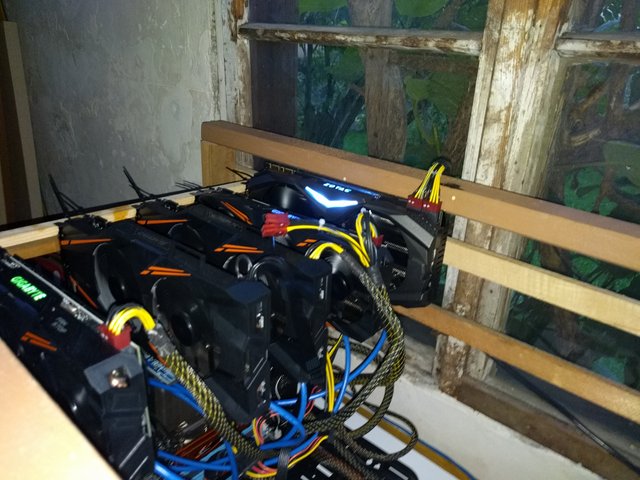
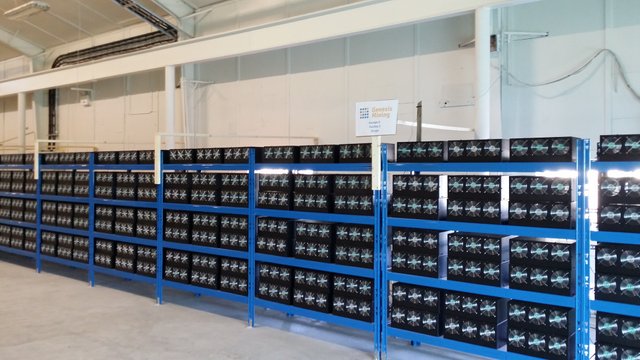
In the early years of Cryptocurrency Mining, regular computers were being used to mine for the assets. With time, Mining became quite difficult and miners needed a lot faster and sophisticated devices to able to mine efficiently. It was in 2013 that a Chinese-based Hardware company by name of Canaan Creative used the technology of Application-Specific Integrated Circuits (ASIC's) to invent the first set of ASICs designed just for Bitcoin Mining. This technology was and can compute very complex hash functions at different rates and speeds with the aim of discovering the right hash, in time. The rates at which it can compute these complex mathematical hash functions is measured in Hashes per Second (H/s). Currently, the fastest ASIC Miner is the Antminer S19 and it computes at 110 TeraHashes per Second (TH/s).
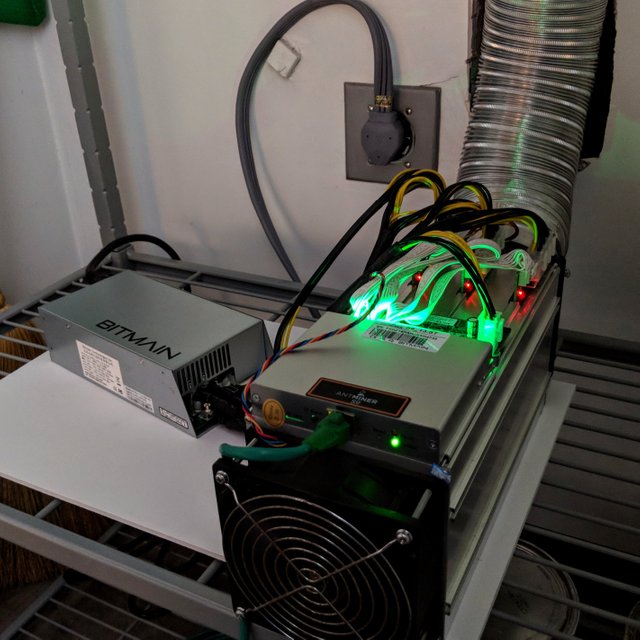
BLOCK REWARDS
After successfully Mining a block, Miners are rewarded with some newly mined coins and all the transaction fees of the transactions in the block. The amount of coins vary from asset to asset. For instance, with Bitcoin, the reward earned is 6.25 BTCs. With Ethereum, miners are rewarded with an amount of 2 Ether plus all the transaction fees for every block that is mined successfully. Mining could be said to be quite lucrative because sometimes, miners could earn twice as much as the Block Reward or even much more with the transaction fees from the block they mined. The screenshot below shows an example of a block that was mined with a Block reward of 24.88 Ethereum and out of it, 2 Ethereum was the Block reward and 22.88 Ethereum was the Transaction fees.
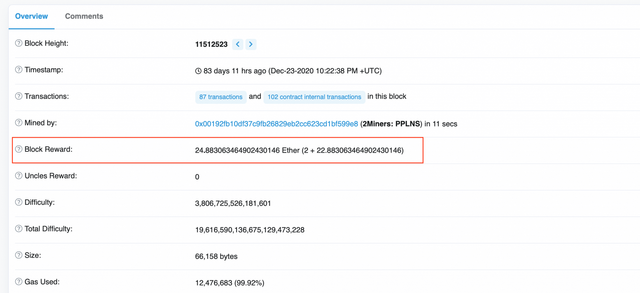

BITCOIN HALVING

Bitcoin Halving is a very wise systematic phenomenon, embedded in the Bitcoin Whitepaper that halves or slashes the rewards Miners get into two after every 210,000 blocks have been mined in the blockchain. So far the Bitcoin Halving has occurred only three (3) times at the following times in history;
- The original Block Reward for Bitcoin was initially 50 BTCs per block before the first halving event occurred on the 28th of November, 2012 at block height 210,000 and the reward was halved to 25 BTCs per block.
- The second halving event occurred on the 9th of July, 2016 at block height 420,000 and it halved the reward to 12.5 BTCs per block.
- Then recently, the third halving event occurred on the 11th of May, 2020 at block height 630,000 and it halved the reward to 6.25 BTCs per block.
This phenomenon among many other factors reduces the Inflation Rate of Bitcoin. It seeks to maintain the value of the crypto asset over its years of existence. The only way new coins are introduced to the circulation supply is through the rewards that miners receive from their mining work. So, Bitcoin Halving is the measure that regulates the number of new coins that are introduced into the blockchain over the years, in such a way to increase its value as its scarcity also goes high. With little to no knowledge in Economics, it is evident that when a product or asset is scarce, its supply is less and the demand for the asset increases. With the demand of the asset gone wild and high, it, in turn, increases the value of the asset; for the reason being that, a lot of individuals and parties would like to acquire the asset and per the spiked demand, they are likely to pay any amount for the asset. This is what makes the value of the asset increase.

EFFECTS OF THE HALVING ON MINERS

To the layman, it can easily be noticed that the Halving of the Block Reward reduces the amount of the reward. As more halvings are occurring, the amount occasionally drops and mining becomes more difficult. And I don't think anyone would actually like their earnings to reduce while they do the same amount or even more work as before.
It will suffice to say that, the Bitcoin Halving is a good thing and its disadvantage is not that terrible as it may look to the layman. Even though the reward received would be halved or slashed into two, it doesn't necessarily mean that the value of the reward reduces. From the previous Halvings that have taken place, it can be noticed (with an analytical eye) that the price of the Asset rises by an amount or even, later on, the value spikes far higher than expected. Most Cryptocurrency Enthusiasts anticipate the halving so they know when to invest in it.
Mining at a point may lose its lucrativeness because as it is getting more difficult and the amount of the reward is also declining, many miners would give up or coil in. This is because to keep up with the multitude that is already in the mining world, a miner would need to acquire more sophisticated devices for mining, and this doesn't come by easily; because it is a very expensive investment. One thing to note is that not all miners would see this as a disadvantage because the more difficult it becomes, the more people drop out of the business creating a great opportunity for those who will still be in the business to capitalize and make more money.

THE CURRENT BLOCK HEIGHT ON THE BITCOIN BLOCKCHAIN AND HOW MANY MORE BLOCKS BEFORE THE NEXT HALVING

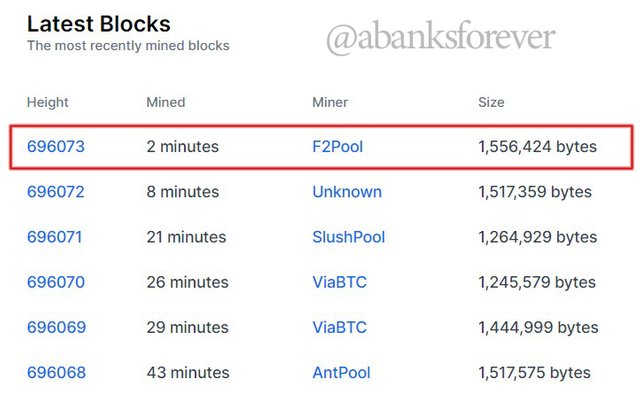
Number of Halvings = 696,073 / 210,000
= 3.31
This implies that there have been 3 Halvings so far, making the next Halving the fourth (4th).
4th Halving Mark = 210,000 x 4
= 840,000
To calculate the number of blocks left to the Halving (the fourth), the Current Block Height is subtracted from 840,000.
Blocks Left = 840,000 - 696,073
= 143,927
This means that there are 143,972 more blocks until the next Halving.

EFFECT OF STEEM's INFLATION RATE REDUCTION ON OTHER COINS AND WHY

Steem's Inflation Rate Reduction may or may not affect the other coins, because even though Steem is a very recognized coin is not as dominant and influential as compared to Bitcoin, Ethereum and the rest.

But with regards to Assets within the Steem Blockchain, the Inflation Rate Reduction of Steem would as well affect them. Assets like Steem Dollars (SBD), Steem Power, Tron and the like are affected; This can be seen in the screenshot of the Steem Whitepaper above in the second sentence. To point it outright, The Inflation Rate Reduction Of Steem would easily have an impact on the Steem Blockchain Asset but would not affect the other coins like Bitcoin, Doge, Ethereum, USDT and the like.

THE CURRENT BLOCK HEIGHT ON THE STEEM BLOCKCHAIN AND HOW MANY MORE BLOCKS BEFORE THE NEXT 0.01% REDUCTION

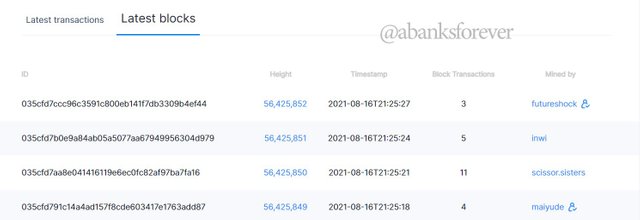
The Screenshot above shows the current Block Height of the Steem Blockchain as of the time I was making this post at Block number 56,425,852. The Steem Blockchain reduces 0.01% after every 250,000 Blocks have been mined.
The Inflation Rate of Steem started at 9.5% but currently, the Inflation Rate of Steem lies at 7.25%. To determine the number of reductions that have occurred, the Block Number is divided by 250,000.
Number of Reductions = 56,425,852 / 250,000
= 225.7
This means that there has been a total number of 225 reductions ever since the Cryptocurrency was published, making the next reduction at 226.
226th Reduction Mark = 226 x 250,000
= 56,500,000
To calculate the number of blocks left to reduction, we subtract the Current Block Height from the 226th Reduction Mark.
Number of Blocks left = 56,500,000 - 56,425,852
= 74,148
This implies that there are 74,148 Blocks left to the next Reduction.

CONTINUATION OF LAST WEEK'S WORK

1.

The current price of Bitcoin as at the time I was making this post was $47,270.85 as shown above.
a)
Assuming I bought $2500 worth of Bitcoin, I would have a total of 0.05288671BTC as per the current price.
Value of $2500 in BTC
$47,270.85 = 1 BTC
$2500 = (2500/47270.85) x 1 BTC
= 0.0528867156 x 1BTC
= 0.05288671 BTC
= 0.0529 BTC
Value of 1 Satoshi per the current Bitcoin price
1 Satoshi = 0.00000001
1 Bitcoin = $47,270.85
1 Satoshi = (0.00000001) × 47,270.85
1 Satoshi = $0.000472708
1 Satoshi = $0.000473 (3 s.f. places)
Value of $2500 worth in Satoshi
If $0.000472708 = 1 Satoshi
$2500 = (2500/0.000472708) x 1 Satoshi
= 5,288,677.15 Satoshis
= 5,280,000 Satoshis (3 s.f.)
This implies that if I purchase $2500 BTC, I would have 5,280,000 Satoshis in 3 significant places.
b)
The value of 1 Satoshi has been worked out as seen above in (a)
The value of 1 Satoshi as per the current price today, is $0.000473 (3 s.f. places)
2.

The value of BNB at the time I made this post was $424.69, as seen in the screenshot above.
a)
Assuming I bought $30 worth of BNB, I would have a total of 0.07063976 BNB
Value of $30 in BNB
$424.69 = 1 BNB
$30 = 0.07063976077 x 1 BNB
= 0.07063976 BNB
= 0.0706 BNB (3 s.f.)
Value of 1 Jager per the current BNB price
0.00000001 BNB = 1 Jager
1 BNB = $424.69
1 Jager = (0.00000001/1) x $424.69
1 Jager = 0.000004246
= 0.00000425 (3 s.f. places)
Value of $30 worth in Jager
If $0.000004246 = 1 Jager
$30 = (30/0.000004246) x 1 Jager
= 7065473.39
=7,060,000 (3 s.f.)
If I bought $30 worth of BNB, I would have 7,060,000 Jagers in 3 significant places
b)
The Value of Jager for the day is seen in (a), as $0.00000425 ( 3 s.f. places)

CONCLUSION

In conclusion, Mining is a very important part of the cryptocurrency world because the security and credibility of the cryptocurrencies depend solely on the work Miners do. Even though Bitcoin Halving reduces the benefits miners are entitled to, it's a measure that actually gives value to the crypto asset. So though the benefit is reduced, you miners may be able to get an amount that is almost equivalent to the value of the previous benefit. This makes it bad in a good way.
This lecture has been very informative and I have learnt quite a lot, thanks to @awesononso.
